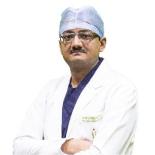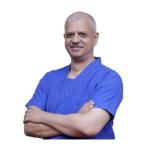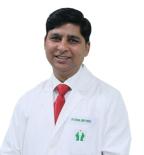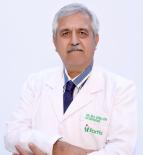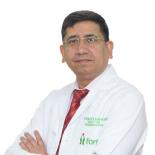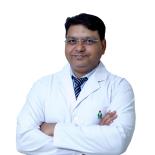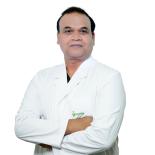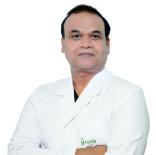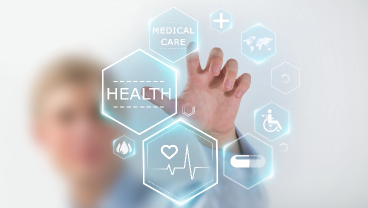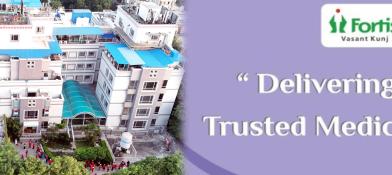About Sports Medicine
Sports medicine is a special area of healthcare focusing on the diagnosis, treatment, and prevention of injuries stemming from physical activity, exercise, and sports. It doesn’t matter whether you are a professional athlete or just a weekend jogger; the physical demands of sports lead to all sorts of injuries, from acute conditions, such as sprains and fractures, to chronic issues, such as tendonitis and stress fractures.
In addition to injury treatment, sports medicine professionals also seek the enhancement of performance through conditioning and rehabilitation programs. Their professional expertise encompasses orthopaedics, physical therapy, nutrition, and even psychology in all attempts to keep the athlete’s body and mind fit. Advancements in technology and medical sciences, such as wearable devices for injury prevention and recovery, have made this field more dynamic and individualised.
As the importance of leading an active lifestyle becomes higher, sports medicine contributes crucially to recovery from injuries but also educates its athletes on how to stay injury-free while maximising their potential.
What is sports medicine?
Sports medicine is one of the branches of medicine that aims to focus on physical fitness, especially the prevention and care of injuries associated with sports and other exercises. Unlike general medicine, which has nothing to do with the injuries incurred from physical activities and sports, sports medicine takes care of patients with disorders resulting from the application of physical exertion. It is typically a multidisciplinary area of practice since it involves not only physicians but also physical therapists, orthopaedic surgeons, athletic trainers, and nutritionists.
Sports medicine specialists have proficient knowledge about the musculoskeletal system, comprising bone, muscles, ligaments, and tendons. These are the areas vulnerable to injury after physical exertion. These specialists are also experts in improving athletic performance and minimising injuries.
Most orthopaedic hospitals serve as sports medicine centres and offer the finest technology for diagnosing, treating, and rehabilitating injuries that accrue from participation in sports. Their treatments include the restoration of athletes and non-athletes to maximise their activity levels.
Which diseases are treated by sports medicine experts?
Musculoskeletal disorders/injuries:
- Sprains and strains: Injuries that cause overstretching or tearing of ligaments, such as sprains, and of muscles or tendons
- Fractures: Splitting of bone parts due to an impact or stress
- Dislocations: Joints are forcibly removed from their usual position
- Tendon injuries: These encompass tendinitis or inflammation and ruptures to the tendons. These may be the Achilles tendon, patellar tendon, or rotator cuff
- Cartilage damage: Examples include meniscus tears in the knee or labral tears in the shoulder or hip
- Overuse injuries: Stress fractures, shin splints, and bursitis due to repetitive stress
Disorders of joint:
- Osteoarthritis: Degenerative joint disease common in athletes who have had either a high impact or repetitive motion
- Rheumatoid arthritis: Joint inflammation, a particular condition requiring special management if the patient is an athlete
Sports-related neurological deficits:
- Bursitis: Inflammation of the bursae, which are the cushioning structures surrounding joints
- Myofascial pain syndrome: Chronic pain in the connective tissues surrounding muscles
- Plantar fasciitis: Heel pain with inflammation of the tissue on the underside of the foot
Sports-related neurological issues:
- Concussions: Head injuries as a result of a blow, which most commonly occur during contact sports
- Nerve entrapments: Carpal tunnel syndrome or thoracic outlet syndrome, where the nerves are compressed
Chronic diseases:
- Asthma: Exertional asthma is considered one of the most common respiratory disorders in athletes.
- Management of diabetes: Sports medicine physicians help athletes manage their diabetes through physical activity.
- Hypertension: The blood pressure of athletes must be managed if it is found elevated.
Infections:
- Athlete’s foot: Fungal infection mainly causing disease in the feet
- MRSA: MRSA stands for Methicillin-Resistant Staphylococcus aureus. It refers to a very dangerous skin infection associated with contact sports.
Mental health:
- Depression and anxiety: Sports medicine professionals can collaborate with psychologists to offer professional advice concerning mental health problems, like depression when a player is injured.
- Burnout and overtraining syndrome: It results from excessive physical and emotional strain on athletes.
Cardiovascular conditions:
- Arrhythmias: These are heart rhythm abnormalities, which can potently be triggered by exercise.
- Sudden cardiac arrest: This is one condition that may strike athletes with undiagnosed heart diseases; therefore, screening and prevention are crucial.
What are the signs and symptoms of sports injuries?
Pain
- Acute pain: Pain is severe and sharp, usually characterised by fracture, dislocation, or serious sprain.
- Chronic pain: Pain due to overuse of the affected area is usually accompanied by gradual onset, such as tendinitis or stress fractures.
- Pain at rest: Pain persisting even at rest might signify more severe trauma or inflammation.
Swelling
- Rapid onset swelling: Usually due to soft tissue injuries (ligament tears, muscle strains) or fractures
- Delayed onset swelling: Normally occurs hours or even days after the injury and is usually observed with joint sprains and hairline fractures
Bruising and discolouration
- Bruising: It signifies subcutaneous internal bleeding under the skin that is usually seen in cases with muscle strains, ligament tears, or blunt trauma.
- Discoloration: Bleeding might pool in the affected area, which can cause the area to become purplish, bluish, or yellowish.
Limitation of movement
- Stiffness: This is the inability to fully move a joint through its entire range; it may be a sign of damage to the ligament and/or muscle.
- Locking or catching: In certain instances, the affected joint might catch or lock, and this condition is frequently seen in cartilaginous injuries, such as meniscal tears.
Instability
- Joint instability: Feeling that the joint ‘gives out’ or feels unstable, common with ligament injuries, such as an ACL tear
- Wobbling or buckling: A weight-bearing joint that is unable to support normal function, indicating a ligament or tendon injury
Weakness
- Muscle weakness: An inability to generate normal strength in a muscle group, often an indicator of a muscle or tendon injury
- Sudden weakness: Indicative of major nerve damage or a large tear in the muscles
Numbness or tingling
- Nerve compression: Normal numbness or tingling in the limbs could be caused by nerve injuries such as carpal tunnel syndrome, sciatica, or nerve entrapment.
- Loss of sensation: Loss of sensation in an entire limb or a portion of the body can be associated with nerve damage.
Deformity
- Visible deformity: Obvious malalignment or disfigurement of a joint or a limb might indicate dislocation, fracture, and, sometimes, marked tearing of the ligaments.
- Bone protrusion: In an open fracture, the bone may protrude through the skin.
Inability to bear weight
- Limping: The inability to put weight on a limb will lead clinicians to suspect fractures, severe sprains, and tendon injuries.
- General inability: The failure to stand on an extremity or the inability to move a limb can be indicative of a more serious trauma, such as a fracture or a tendon tear.
Breaking or popping sounds
- Specific ‘pop’: A report of a popping sound during the injury is most likely related to injuries involving ligamentous tears, even ACL or meniscal.
- Clicking or grinding: Clicking or grinding noises from the joints may be indicative of cartilaginous damage or even an early indicator of osteoarthritis.
Redness and heat
- Inflammation: The presence of redness, heat, and tenderness in the concerned area is characteristic of inflammation resulting from tissue damage or infection.
Reduced function
- Unable to perform normal activity: Inability to execute simple motions or exercises conditioning-specific actions, such as throwing and running, means a problem in the muscles, tendons, or joints.
What are the benefits of early intervention by a sports medicine expert?
- Prevention of further damage: Without prompt treatment, even the slightest injury might degenerate. For example, an ankle sprain, if not treated appropriately in time, may result in chronic instability or recurrent injuries.
- Recovery time: Early treatment can speed up the recovery. Quicker treatment and rehabilitation result in a shorter time to return to daily activities.
- Reducing chronic pain: Some untreated sports injuries culminate into lifelong pain and dysfunction. Early treatment alleviates the symptoms and prevents possible long-term problems.
- Minimising the need for surgery: Some ailments might be treated non-surgically using drugs, exercise, or physical therapy, but some might require surgery if diagnosed late.
- Performance: A sports medicine professional will not only treat you but also teach you how to perfect your performance, avoid re-injury, and generally improve.
All orthopaedic hospitals stress that early diagnosis and treatment are necessary, and the services include advanced imaging techniques such as MRI and X-ray along with physical evaluation to screen out injuries early.
Treatments available
Sports medicine provides treatments for the prevention, management, and rehabilitation of various types of injuries. The choice of treatment depends on the type of injury sustained, its severity, and the intention of the athlete regarding recovery.
Conservative (non-surgical) treatments:
- RICE: Basic first aid for acute injuries, such as sprains
- Physical therapy: Wholesome exercise to regain movement and strength
- Medications: NSAIDs for pain and inflammation and corticosteroid injections for the more severe cases
- Supportive devices: Braces, splints, orthotics, and tape for stabilisation
- PRP therapy: Platelet-rich plasma injections that bring about healing in tendons
- Shockwave therapy: A non-invasive, non-surgical approach to treating chronic injuries, such as plantar fasciitis
- Dry needling/acupuncture: Used to treat muscle pain
Surgical treatments:
- Arthroscopy: Minimally invasive surgery for joint-related injuries
- Ligament reconstruction: Commonly done in the case of a torn ACL or any other ligament
- Fracture fixation and tendon repair: Surgical intervention towards healing fractured bones or the tearing of tendons
- Meniscus and cartilage repair: Knee injury; joint replacement is considered in extreme cases
Rehabilitation and recovery:
- Rehabilitation programs: Dedicated to getting back the original functioning after an injury or surgery
- Strength training and conditioning: To regain strength in the muscles and prevent recurrence
- Biomechanical analysis: Could include restoring motion patterns so as not to encourage further injury
Emerging and preventive treatments:
- Stem cell therapy: These are experimental procedures aimed at repairing damaged cartilage.
- Injury prevention programs: These can be applied through exercises that improve flexibility, strength, and balance.
- Nutritional and psychological support: These are essential for proper recovery.
How does team Fortis help you recover from sports injuries?
Fortis Hospital greatly specialises in orthopaedics and brings together sports medicine experts who work with a physical therapist, a surgeon, and a rehabilitation specialist to provide holistic treatment.
- Customised treatment plans: Here, each patient is offered a customised treatment plan based on a particular injury and goals.
- Sophisticated diagnostic testing: Fortis employs the latest in imaging technologies, including MRI and CT scans, as well as ultrasound. This ensures a correct diagnosis, so nothing goes undetected.
- Comprehensive surgical care: For patients requiring surgery, Fortis has one of the best orthopaedic surgeons in the region, even globally. They can do surgery via minimally invasive approaches that ensure the patient can return to recovery within a short period with the least complications.
- Physical therapy and rehabilitation: After the first treatment, the Fortis team offers extensive rehabilitation programs. Physical therapists closely work with the patient to restore full function while preventing further injuries.
- Nutritional support: Nutrition heals, and Fortis shall guide the patients about ideal diet modifications to accelerate recovery and make patients healthy and fit for all-rounded development.
- Follow-up care after recovery: The cure does not end with treatment. Fortis provides comprehensive follow-up care and post-recovery monitoring to ensure the patient is completely healed to return to work or school and resume normal living.
Conclusion
Sports medicine services ensure that people come out of their injuries to resume their usual lifestyles quickly. It is only through early intervention combined with the latest treatment options available in orthopaedic hospitals, such as Fortis, that the chances of quick recovery or full retrieval of strength can be guaranteed in cases with either minor sprains or the most severe ligament tear.
Our Team of Experts
View allMedical Procedures for Sports Medicine
View allBreakthrough Cases
View allOur patient’s stories
View allRelated Specialities
Other Specialities
-
Explore Hospitals for Sports Medicine
Fortis Escorts Heart Institute, New Delhi Fortis Flt. Lt. Rajan Dhall Hospital, Vasant Kunj Fortis Hospital BG Road Bangalore Fortis Hospital, Ludhiana Fortis Hospital, Mohali Fortis Hospital, Noida Fortis Hospital, Richmond Road, Bengaluru Fortis Hospital, Shalimar Bagh, New Delhi Fortis Memorial Research Institute, Gurgaon Hiranandani Fortis Hospital, Vashi, Mumbai Fortis Hospital - Greater Noida Fortis Hospital, Mulund, Mumbai Fortis Nagarbhavi Bangalore Fortis La Femme, Greater Kailash II, New Delhi Fortis Hospital CG Road Bangalore Fortis Escorts Hospital, Amritsar Fortis Escorts Hospital, Faridabad -
Explore Doctors for Sports Medicine by Hospital
Doctors in Fortis Escorts Heart Institute, New Delhi Doctors in Fortis Flt. Lt. Rajan Dhall Hospital, Vasant Kunj Doctors in Fortis Hospital BG Road Bangalore Doctors in Fortis Hospital, Ludhiana Doctors in Fortis Hospital, Mohali Doctors in Fortis Hospital, Noida Doctors in Fortis Hospital, Richmond Road, Bengaluru Doctors in Fortis Hospital, Shalimar Bagh, New Delhi Doctors in Fortis Memorial Research Institute, Gurgaon Doctors in Hiranandani Fortis Hospital, Vashi, Mumbai Doctors in Fortis Hospital - Greater Noida Doctors in Fortis Hospital, Mulund, Mumbai Doctors in Fortis Nagarbhavi Bangalore Doctors in Fortis La Femme, Greater Kailash II, New Delhi Doctors in Fortis Hospital CG Road Bangalore Doctors in Fortis Escorts Hospital, Amritsar Doctors in Fortis Escorts Hospital, Faridabad


